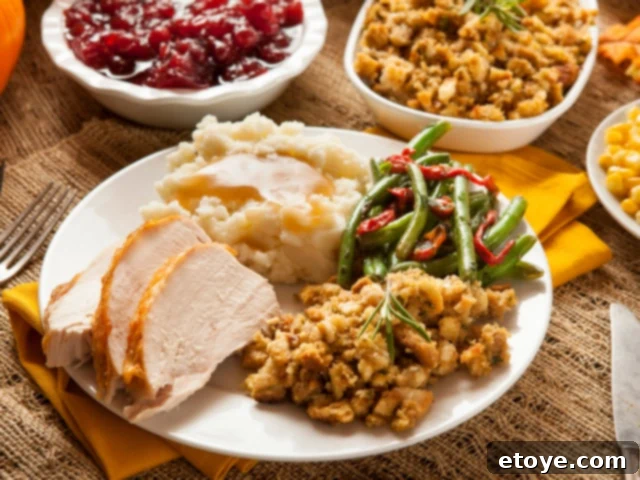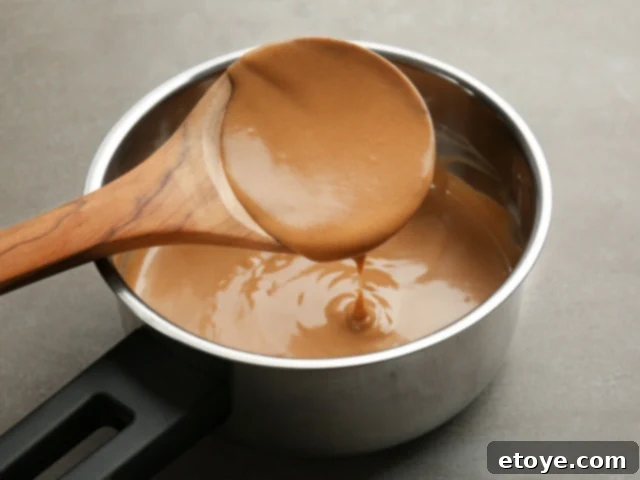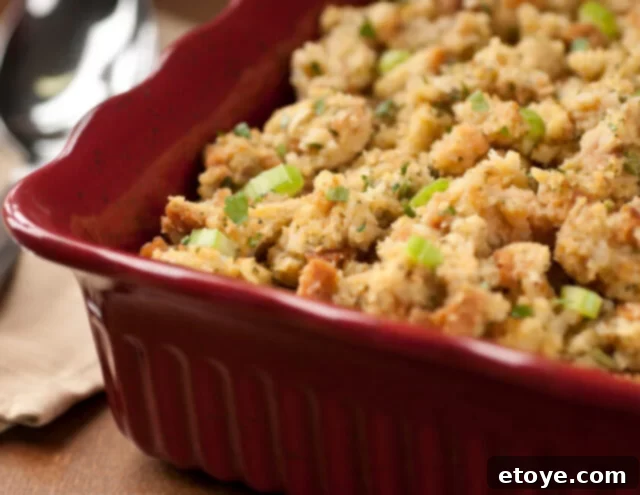The Ultimate Guide to Reheating Thanksgiving Leftovers: Keep Your Holiday Flavors Alive
Thanksgiving dinner is a culinary masterpiece, a symphony of flavors and textures that brings families together. But let’s be honest, for many, the joy doesn’t end when the last slice of pie is served. The real magic often begins with the bounty of Thanksgiving leftovers. Transforming these delicious remnants into equally satisfying meals the next day, or even days later, is an art form. However, improper reheating can quickly turn your gourmet feast into a dry, unappetizing disappointment – or worse, a food safety hazard.
This comprehensive guide will equip you with all the knowledge you need to expertly reheat every beloved Thanksgiving dish, ensuring each bite is as flavorful and safe as it was on the holiday itself. From achieving perfectly moist turkey to creamy mashed potatoes and crispy stuffing, we’ll cover the best techniques, essential tools, and crucial food safety tips to maximize your post-Thanksgiving enjoyment.

Mastering Thanksgiving Leftover Storage: The First Step to Delicious Reheating
Before you can even think about reheating, proper storage is paramount. The way you store your Thanksgiving leftovers directly impacts their safety, texture, and flavor for future enjoyment. Failing to store food correctly can lead to rapid bacterial growth, turning your festive meal into a health risk.
Crucial Storage Practices for Food Safety:
- Prompt Refrigeration: All perishable leftovers should be refrigerated within two hours of being served. This rule is critical for keeping food out of the “danger zone,” which is between 40°F (4°C) and 140°F (60°C), where harmful bacteria multiply rapidly.
- Shallow, Airtight Containers: To facilitate quick and even cooling, transfer leftovers into shallow containers. Large, deep containers can trap heat, preventing the center from cooling down fast enough. Airtight containers are also essential to prevent moisture loss and absorb unwanted odors from the refrigerator. Minimize air space within the container to further reduce spoilage.
- Proper Portioning: Dividing larger dishes, like a whole turkey or a big casserole, into smaller, individual portions before refrigeration helps them cool down faster and makes future reheating more efficient.
- Labeling for Freshness: While Thanksgiving leftovers are tempting, they don’t last forever. Most cooked foods should be consumed within 3-4 days when stored in the refrigerator. Labeling your containers with the date will help you keep track of their freshness.
Freezing Thanksgiving Leftovers for Extended Enjoyment:
If you have an abundance of food or want to enjoy your Thanksgiving flavors beyond a few days, freezing is an excellent option. Most cooked dishes can be frozen for 2-3 months without significant loss of quality.
- Freezer-Safe Containers: Use freezer-safe bags or containers designed to prevent freezer burn. Remove as much air as possible to protect the food.
- Thawing Safely: Always thaw frozen leftovers in the refrigerator overnight, in cold water (changing the water every 30 minutes), or in the microwave. Never thaw perishable foods at room temperature, as this allows bacteria to multiply.
Essential Tools for Reheating Leftovers Like a Pro
Having the right kitchen tools can make all the difference in achieving perfectly reheated Thanksgiving leftovers. Each appliance offers unique benefits, ensuring your dishes retain their original charm.
- Oven or Countertop Oven: The undisputed champion for even heating, especially for larger portions of turkey, stuffing, or casseroles. It helps maintain moisture and can even re-crisp certain elements. A conventional oven distributes heat uniformly, preventing hot spots and ensuring the entire dish reaches a safe internal temperature.
- Microwave: Your go-to for speed and convenience, ideal for smaller portions or individual servings. While quick, care must be taken to prevent drying out and to ensure even heating. It excels at warming mashed potatoes, gravies, and small slices of turkey.
- Stovetop: Perfect for dishes that benefit from gentle, controlled heat and frequent stirring, such as mashed potatoes, gravy, and creamy sauces. It allows you to gradually bring food up to temperature, adding liquids as needed to restore texture.
- Slow Cooker: An excellent choice for reheating moist dishes like stews, chili, or even large batches of pulled turkey. The slow, gentle heat prevents drying and allows flavors to meld beautifully. It’s particularly good for keeping food warm for an extended period without overcooking.
- Air Fryer: A modern marvel for restoring crispiness! Use it to revitalize roasted vegetables, achieve a perfectly crispy skin on turkey, or even reheat small portions of stuffing to give it a delightful crunchy exterior. Its circulating hot air mimics deep-frying with less oil.

Dish-by-Dish Guide: How to Reheat Every Thanksgiving Favorite
Every Thanksgiving dish has its unique characteristics, and thus, its own ideal reheating method. Follow these specific instructions to bring each component of your feast back to life.
Reheating Leftover Turkey: The Art of Moisture Retention
Reheating turkey can be challenging, as the lean meat is prone to drying out. The key is to introduce moisture and use gentle heat.
- Oven Method (Best for large portions/carved meat):
- Preheat your oven to a moderate 300-325°F (150-160°C).
- Place turkey slices or portions in a baking dish.
- Add a splash of turkey stock, chicken broth, or even water to the bottom of the dish – just enough to create steam.
- Cover the dish tightly with aluminum foil. This traps moisture and allows the turkey to steam gently, preventing dryness.
- Heat for 20-30 minutes, or until the internal temperature reaches 165°F (74°C). For whole turkey portions, it might take longer. Avoid high heat, which can quickly dry out the meat.
- Stovetop Method (Best for small slices/shredded turkey):
- Heat a skillet over medium-low heat.
- Add turkey slices along with a tablespoon or two of broth or water.
- Cover the skillet and heat gently, stirring occasionally, until the turkey is warmed through and reaches 165°F (74°C). This method is excellent for adding turkey to a sandwich or salad.
- Microwave Method (Quickest for individual servings):
- Arrange small, thin slices of turkey on a microwave-safe plate.
- Drizzle with a tiny amount of broth or water, or cover with a damp paper towel.
- Heat in short bursts (30-60 seconds), stirring or flipping the turkey between intervals, until it’s hot throughout and reaches 165°F (74°C). The damp paper towel creates steam, helping to prevent the turkey from becoming rubbery.
Stuffing and Casseroles: Reclaiming Crispy Edges and Creamy Centers
Whether it’s a savory bread stuffing or a hearty green bean casserole, the goal is to reheat thoroughly while preserving texture.
- Oven Method (Recommended for best results):
- Preheat your oven to 325-350°F (160-175°C).
- Transfer stuffing or casserole into a baking dish or ceramic dish.
- For stuffing, you can add a tablespoon or two of broth to prevent drying. For casseroles, a splash of milk or cream can help maintain creaminess.
- Cover tightly with aluminum foil to ensure even heating and moisture retention.
- Bake for 20-30 minutes, or until the center is steaming hot and reaches 165°F (74°C).
- For a crispy topping, remove the foil for the last 5-10 minutes of baking.
- Microwave Method (For smaller, faster portions):
- Portion your stuffing or casserole into a microwave-safe bowl.
- Add a small amount of liquid (broth for stuffing, milk for casseroles) and cover with a damp paper towel or microwave-safe lid.
- Reheat in 1-2 minute intervals, stirring thoroughly between each interval, until heated through to 165°F (74°C).
Mashed Potatoes and Sweet Potato Casserole: Smooth, Creamy Perfection
The trick here is to restore their creamy consistency without making them dry or lumpy.
- Stovetop Method (Ideal for large batches):
- Place mashed potatoes or sweet potato casserole in a saucepan over low to medium-low heat.
- Add a splash of milk, cream, chicken broth, or a pat of butter (for richness and moisture).
- Stir frequently and gently until creamy and heated through to 165°F (74°C). Be patient to avoid scorching.
- Microwave Method (Great for individual servings):
- Spoon mashed potatoes into a microwave-safe bowl.
- Add a tablespoon of milk, cream, or water.
- Cover with a damp paper towel or microwave-safe lid.
- Heat in 1-2 minute intervals, stirring well after each, until hot and creamy.
Dinner Rolls and Bread: Soft and Warm
Fresh-tasting rolls are a must, and your oven is usually the best tool.
- Oven Method (Recommended):
- Preheat oven to 300°F (150°C).
- Wrap rolls tightly in aluminum foil. This traps steam and prevents them from drying out.
- Warm for 10-15 minutes, or until soft and warm to the touch.
- Microwave Method (Quickest):
- Wrap a single roll in a damp paper towel.
- Microwave for 10-15 seconds. Be careful not to overdo it, or they can become tough.
Gravy and Sauces: Silky Smooth Again
Gravy, cranberry sauce, and other liquid accompaniments reheat beautifully on the stovetop.
- Stovetop Method (Recommended):
- Pour gravy or sauce into a small saucepan.
- Heat over medium-low heat, stirring frequently, until it reaches a gentle simmer and is steaming hot.
- If gravy has thickened too much, whisk in a little more broth or water until desired consistency. If it’s separated, vigorous whisking can often bring it back together.
- For thinner sauces like cranberry sauce, low heat helps prevent separation and boiling over.
- Microwave Method:
- Place gravy or sauce in a microwave-safe bowl.
- Heat in short 30-60 second intervals, stirring well after each, until hot.
Roasted Vegetables: Restoring Crispness
Soggy roasted vegetables are a common leftover disappointment, but they can be revived!
- Air Fryer Method (Highly Recommended):
- Preheat air fryer to 375-400°F (190-200°C).
- Arrange vegetables in a single layer in the air fryer basket.
- Cook for 5-8 minutes, shaking the basket halfway through, until hot and slightly re-crisped.
- Oven Method:
- Preheat oven to 400°F (200°C).
- Spread vegetables in a single layer on a baking sheet.
- Roast for 10-15 minutes, tossing once, until hot and crisp.

Common Reheating Mistakes to Avoid for Safe and Delicious Leftovers
Reheating Thanksgiving leftovers isn’t just about taste; it’s also about ensuring food safety. Avoiding these common pitfalls will help you enjoy your festive meal worry-free.
1. Using High Heat Too Quickly
It’s tempting to blast leftovers on high heat to save time, but this is one of the quickest ways to ruin them. High heat leads to uneven cooking, causing the edges to dry out and become rubbery while the center remains cold. This is particularly true for lean meats like turkey and delicate dishes like casseroles. Instead, opt for low to medium heat in the oven or stovetop, or use short, controlled bursts in the microwave, allowing the food to warm through gradually and evenly.
2. Reheating in Large Portions
Heating a massive container of stuffing or a whole turkey breast at once is inefficient and unsafe. Large portions heat unevenly, creating “cold spots” where bacteria can thrive and “hot spots” where food becomes overcooked and dry. Always divide leftovers into smaller, individual, or family-sized portions before reheating. Spreading food out on a baking sheet or using shallow containers promotes faster and more uniform heating.
3. Skipping the Moisture
Many Thanksgiving dishes, especially turkey, mashed potatoes, and stuffing, are prone to drying out during reheating. Ignoring the need for added moisture is a common mistake. Before reheating, add a small amount of liquid – turkey stock, chicken broth, milk, cream, or even water – to dishes. For microwave reheating, covering food with a damp paper towel or a microwave-safe lid helps trap steam, preventing essential moisture from escaping and keeping your food tender.
4. Not Covering Food Properly
Whether in the oven or microwave, leaving food uncovered during reheating is a recipe for dryness and an uneven temperature. When using the oven, always cover dishes with aluminum foil. This creates a steamy environment that gently warms the food and locks in moisture. In the microwave, use a microwave-safe lid or a damp paper towel. This allows some steam to escape while still preventing the food from drying out and splattering inside your appliance.
5. Reheating Multiple Different Foods Together
Each Thanksgiving dish has a unique texture and density, meaning they heat at different rates and require different approaches. Trying to reheat turkey, mashed potatoes, and green bean casserole all at once, especially in the microwave, will yield subpar results. The mashed potatoes might be scalding hot, while the turkey is still lukewarm and dry. Reheat similar items together or, ideally, warm each dish individually to ensure optimal taste, texture, and food safety.
6. Not Checking the Internal Temperature
This is arguably the most critical mistake to avoid. To guarantee food safety and eliminate harmful bacteria, all perishable leftovers must be reheated to an internal temperature of at least 165°F (74°C). Relying on guesswork can leave you in the food “danger zone.” Invest in a reliable food thermometer and use it to check the thickest part of the food (avoiding bones) before serving. This step is non-negotiable for items like turkey, stuffing, and casseroles.
7. Leaving Food Out Too Long Before Reheating
The “two-hour rule” for refrigeration also applies to food left out before reheating. Leaving leftovers at room temperature for an extended period (more than two hours) allows spoilage bacteria to multiply rapidly, even if you intend to reheat them. Always transfer leftovers directly from the refrigerator to your heating appliance. If using a slow cooker, ensure it reaches and maintains a safe temperature quickly during the reheating process.
By consciously avoiding these common reheating mistakes, you can ensure that every meal made from your Thanksgiving leftovers is just as delicious, satisfying, and safe as the original holiday feast.

What Leftovers Are You Looking Forward to Re-Enjoying?
Thanksgiving leftovers are a special treat, offering a chance to extend the holiday cheer and enjoy comforting flavors all over again. We hope this guide empowers you to reheat your feast like a culinary expert, ensuring every dish is as safe, moist, and delicious as it was fresh out of the oven. Experiment with different methods, pay attention to the details, and savor every bite.
We’d love to hear from you! What Thanksgiving leftovers are you most excited to savor a second time around? Share your favorite dishes and your go-to reheating tips in the comments below!
Looking for More Delicious Tips for Your Thanksgiving Leftovers?
Don’t let a single bite go to waste! Explore these additional resources for creative ideas and meal plans that will transform your Thanksgiving remnants into exciting new culinary adventures:
- No Waste November: A 7-Day Meal Plan for Thanksgiving Leftovers
- Creative Meal Ideas For Turkey Day Leftovers
- What To Do With Thanksgiving Leftovers: Transform THIS into THAT
- Leftover Turkey: The Legendary “Bobbie” Thanksgiving Sandwich
